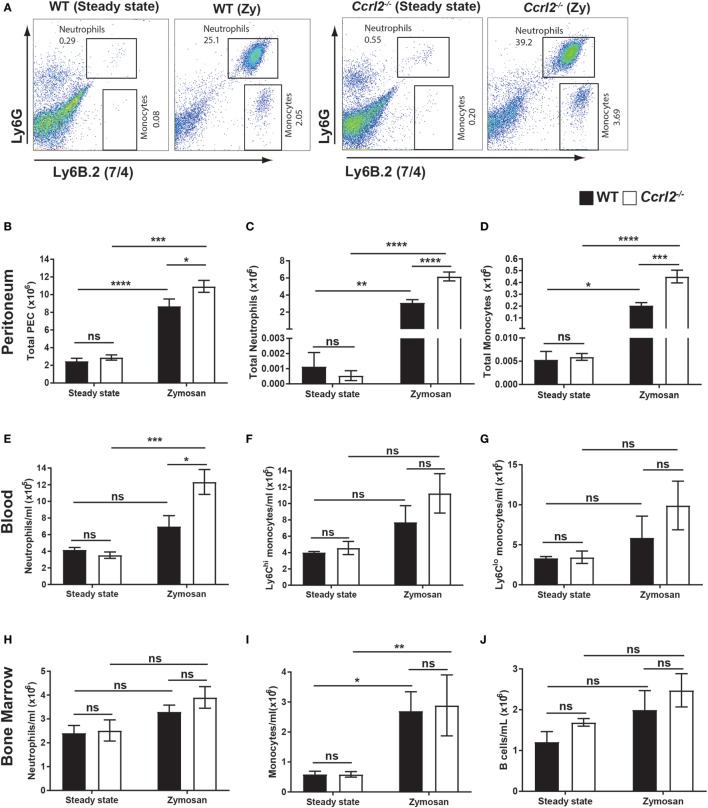Figure 2.
Deletion of Ccrl2 increased neutrophil mobilisation and recruitment to local sites of inflammation. 8- to 10-week-old male Ccrl2−/− or age-matched littermate controls were injected with zymosan i.p. (100 µg/animal), and 4 h later, zymosan injected animals or steady state animals were sacrificed. Peritoneal cavities were lavaged with 5 ml ice-cold PBS supplemented with 2 mM EDTA. Cells were quantified using counting beads, and cell populations were analysed using flow cytometry. (A) Representative flow cytometry plots of the peritoneal cavities of wild-type (WT) and Ccrl2−/− steady state mice or mice challenged with zymosan. Monocytes were defined as Ly6B.2 (7/4)hi, Ly6Glo and neutrophils were defined as Ly6B.2 (7/4)hi, Ly6Ghi. WT animals are presented on the left and Ccrl2−/− animals are presented on the right. (B–D) Total peritoneal cell counts from steady state animals or from animals 4 h post zymosan challenge. Error bars represent SEM of n = 4–13 animals/group and n = 2 independent experiments. (E–G) Blood cell counts in WT and Ccrl2−/− mice. Error bars represent SEM. n = 4–9 animals/group and n = 2 independent experiments. (H–J) Quantified bone marrow cells. Error bars represent SEM. n = 4–9 animals/group from n = 2 independent experiments. Statistical significance was assessed using a two-way analysis of variance with Dunnett’s post hoc multiple comparisons test *P ≤ 0.05, **P ≤ 0.01, ***P ≤ 0.001, ****P ≤ 0.0001.

